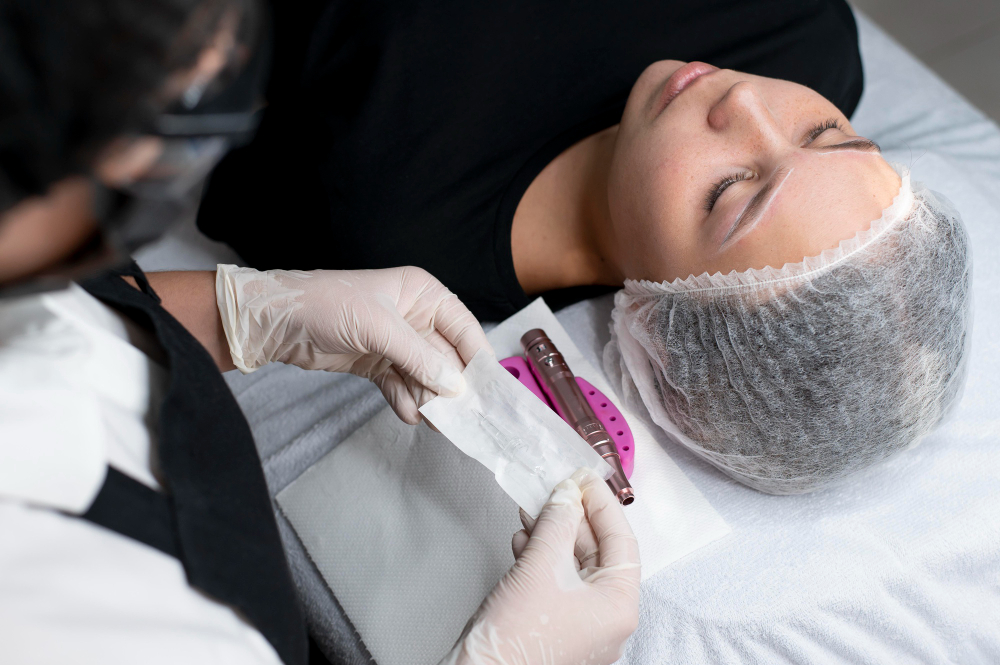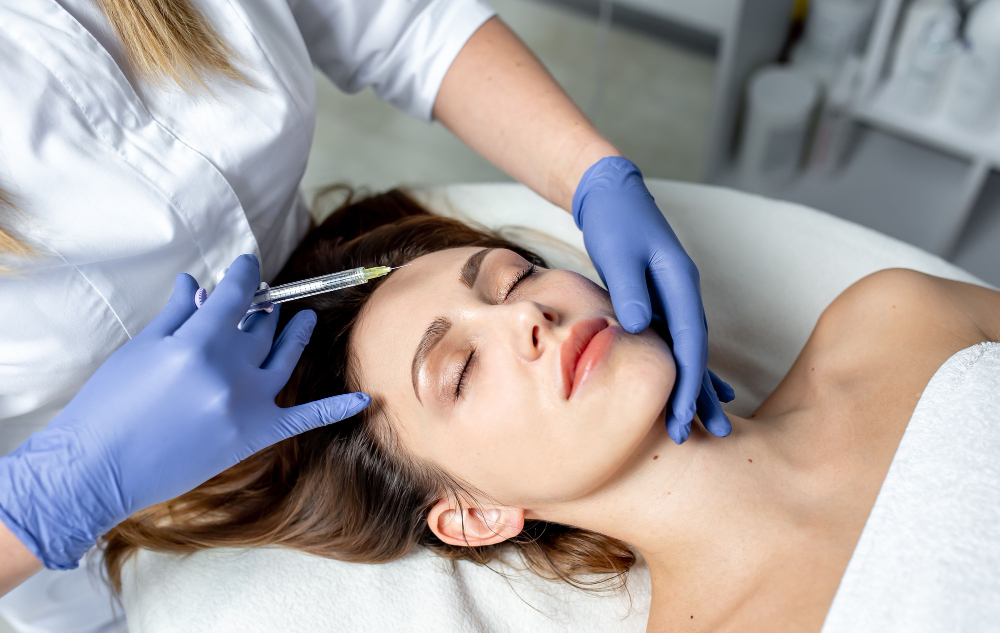
When it comes to skincare, finding a treatment that delivers visible results without downtime is like striking gold. One such option is dermaplaning. This skin-smoothing technique has gained massive popularity among most of us seeking a simple, effective way to achieve a radiant look. If you’ve been curious about how dermaplaning treatments work, their benefits, and whether they’re right for you, this article will clear things up.
What Is Dermaplaning?
Dermaplaning is a non-invasive exfoliation procedure where a licensed professional uses a sterile blade to gently scrape away dead skin cells and fine facial hair (often called “peach fuzz”). The process reveals the fresh, smooth skin underneath. Think of it as giving your skin a clean slate to shine.
Unlike chemical peels or abrasive scrubs, dermaplaning doesn’t rely on harsh ingredients or devices. Instead, it’s a manual technique that delivers immediate results, making it a go-to option for those who want to improve their skin’s appearance with minimal fuss.
Why We Are Turning to Dermaplaning
With so many skincare treatments available, what makes dermaplaning stand out? The answer lies in its simplicity and versatility. Here’s why more and more we are giving it a try:
- Instant Gratification: After a session, your skin feels softer, smoother, and looks brighter. There’s no waiting period for results.
- No Harsh Chemicals: This treatment is a great alternative for those with sensitive skin or who prefer to avoid chemical-based procedures.
- Improved Makeup Application: Without peach fuzz and dead skin cells in the way, makeup glides on seamlessly and looks more natural.
- Quick and Painless: The process takes about 30 minutes and doesn’t involve any discomfort, making it a convenient option for busy schedules.
Who Can Benefit from Dermaplaning?
Dermaplaning treatments are suitable for most skin types, but they’re especially effective for those dealing with dullness, uneven texture, or dry skin. If you’ve ever felt like your skincare products aren’t absorbing properly or your face just doesn’t have that healthy glow, dermaplaning can make a noticeable difference.
However, it might not be the best choice for those with active acne, rosacea, or highly sensitive skin. In these cases, other treatments might be more suitable, and it’s always a good idea to consult a professional before diving in.
What Happens During a Dermaplaning Session?
Wondering what to expect when you book a dermaplaning appointment? Here’s a breakdown:
- Skin Prep: The professional starts by thoroughly cleansing your skin to remove any dirt, oil, or makeup. This ensures the blade can glide smoothly.
- The Treatment: Using a sterilized surgical-grade blade, the technician gently scrapes the surface of your skin at a 45-degree angle. This removes the top layer of dead skin and fine hairs.
- Finishing Touches: Once the exfoliation is complete, your skin is cleansed again and often treated with soothing products like serums or moisturizers to lock in hydration.
The entire process is comfortable, and there’s no downtime, meaning you can jump right back into your day.
Common Myths About Dermaplaning
Like any beauty treatment, dermaplaning comes with its share of myths and misconceptions. Let’s set the record straight:
- Myth 1: Dermaplaning Causes Hair to Grow Back Thicker
This is one of the most common concerns, but it’s simply not true. Dermaplaning doesn’t affect the structure of hair follicles, so the hair will grow back at the same thickness and texture. - Myth 2: It’s Only for Women
While women often seek dermaplaning to remove peach fuzz, the treatment is equally effective for men. It’s all about improving skin texture and glow, regardless of gender. - Myth 3: It’s Dangerous
When performed by a trained professional, dermaplaning is completely safe. The key is to avoid DIY attempts and trust someone with experience.
Benefits That Go Beyond the Surface
While the immediate results of dermaplaning are noticeable, the benefits go deeper than just a smooth complexion:
- Boosts Skincare Effectiveness: Without dead skin cells acting as a barrier, your serums and creams can penetrate more effectively.
- Minimizes the Appearance of Fine Lines: Regular treatments can help improve the texture of your skin over time.
- Reduces Breakouts: By keeping your skin clean and exfoliated, dermaplaning can help prevent clogged pores, which lead to pimples.

How Often Should You Get Dermaplaning?
Dermaplaning is gentle enough to be done once a month. This frequency ensures your skin remains smooth and refreshed without over-exfoliating. However, everyone’s skin is different, so your aesthetician may recommend a personalized schedule based on your needs.
Preparing for Your First Dermaplaning Treatment
If you’re ready to try dermaplaning, here are a few tips to ensure the best results:
- Skip Exfoliants: Avoid using scrubs or chemical exfoliants a few days before your appointment to prevent over-sensitizing your skin.
- Clean Skin: Arrive at your appointment with a clean face, free of makeup or heavy creams.
- Communicate: Let your provider know about any skin conditions or products you’re using, like retinoids, that might impact the treatment.
What About Aftercare?
Post-treatment care is simple and straightforward:
- Protect Your Skin: Use a broad-spectrum sunscreen, as your skin will be more sensitive to UV rays after exfoliation.
- Hydrate: Keep your skin moisturized to maintain its smooth texture.
- Avoid Harsh Products: Steer clear of strong exfoliants or active ingredients like AHAs and BHAs for at least 48 hours.
By following these steps, you’ll prolong the benefits of your dermaplaning session and keep your skin looking its best.
Is Dermaplaning Right for You?
If you’re looking for a quick and effective way to refresh your skin, dermaplaning might just be the answer. It’s low-maintenance, delivers instant results, and can be customized to suit most skin types. Whether you want to glow for a special event or simply feel more confident in your skin, this treatment has a lot to offer.
Remember, the key to great results is choosing a licensed professional with experience. They’ll ensure the treatment is performed safely and effectively, leaving you with skin that’s smooth, soft, and ready to shine.
In the world of skincare, simplicity often wins. Dermaplaning treatments are proof that sometimes, less really is more. So, if you’re ready to reveal the silky, glowing skin beneath, why not give it a try?
FAQS
Here are five frequently asked questions (FAQs) about dermaplaning:
- Is dermaplaning painful?
No, dermaplaning is a gentle, painless procedure that feels similar to a light scraping on your skin. - Does dermaplaning cause hair to grow back thicker?
No, dermaplaning doesn’t change the thickness or texture of hair; it grows back as it was before. - How often should I get dermaplaning treatments?
Dermaplaning is typically recommended every 4 to 6 weeks for best results. - Can dermaplaning be done on all skin types?
Yes, dermaplaning is safe for most skin types, except for those with active acne or extremely sensitive skin. - Is there any downtime after dermaplaning?
No, there is no downtime after dermaplaning, and you can resume normal activities immediately.